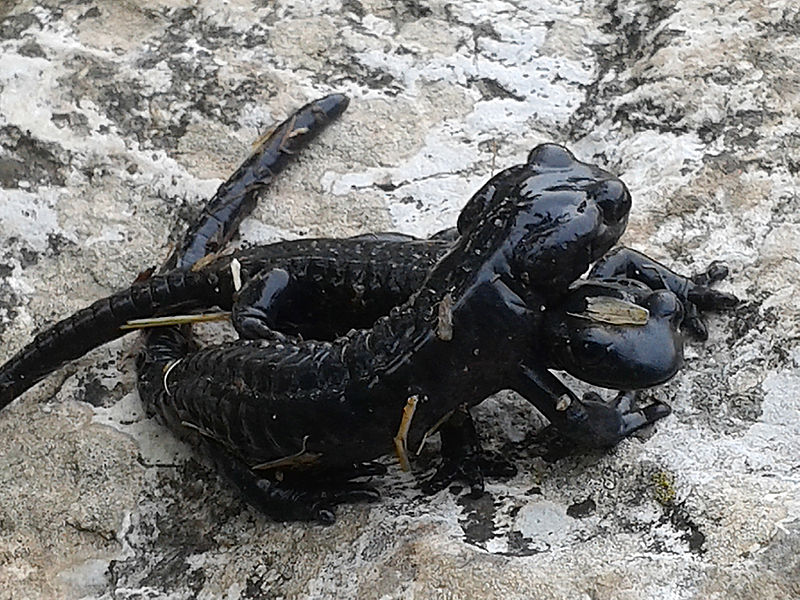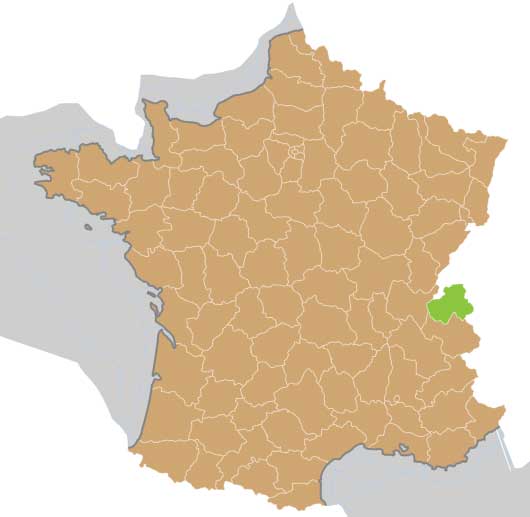

Salamandre noire
Salamandra atra
Alpine Salamander
The Alpine salamander is an endemic of the alpine arc with some isolated
areas in the

Salamandra atra
is a fully terrestrial species. Mating involves a ventral amplexus by
the male, followed by the deposition of the spermatophore. One embryo
develops in each of the two uteri where the developing young first feed
on fertilised and later on unfertilised ova in the uteri. Later in
development, a zona trophica develops on the border between oviduct and
uterus, which continuously provides the young with a cellular material
that serves as food. The young develop extremely large external gills
which serve as an exchange of nutritive fluid through the maternal
uterus. Gestation in total takes 2 years between 650 and 1000 m, and 3
years between 1400 and 1700 m elevation. The two terrestrial, fully
metamorphosed young are 40-50 mm total length upon birth when they are
fully self supporting.
Longevity is at least 10 years. Length up to 15cm
Generally considered as of least concern due to the general nature of
their habitat potential threats although unlikely are:


